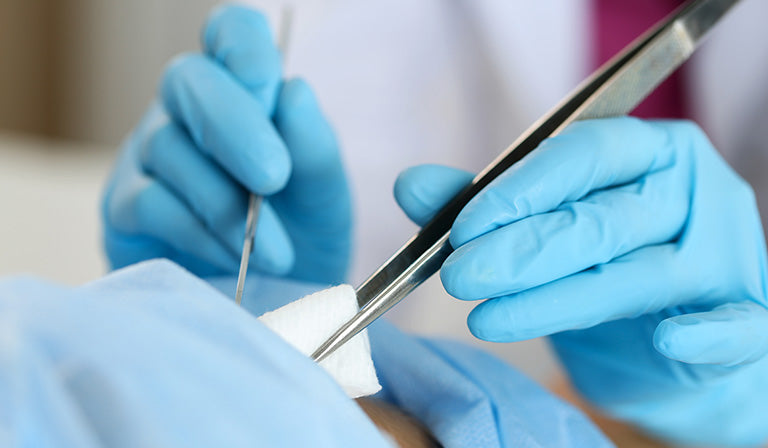

· By Trevor Horne
Understanding The Use Of Vertical And Horizontal Mattress Sutures
For skin closure, two of the most commonly used methods are interrupted horizontal and vertical mattress suture techniques. Less prominent scarring and wound edge eversion is promoted by mattress sutures. When, over a distance, wound edges have to be brought together, horizontal and vertical mattress sutures allow closing of skin edges under tension.
A variation of the horizontal mattress suture, there is also something referred to as a corner stitch. It's usually used for the closure of angled wounds or skin flaps. Although railroad marks or surface scarring can be produced by mattress sutures, the damage may be limited by the early removal of the suture.
Advantages of Interrupted Vertical and Horizontal Mattress Suture Techniques
Where skin closure methods are concerned, these are the two most frequently used. For bringing wound edges together over a distance, meaning that the wound would be under tension, they are most advantageous. For a skin flap closure, as an anchoring stitch, mattress sutures are frequently performed. Skin edge eversion is also promoted by the mattress technique. Less prominent scarring is possible when, at the time of closure, eversion of the wound edges occurs. When closing sites with edges that tend to roll under, eversion produced by mattress sutures is invaluable. This can apply to areas in the groin, posterior neck, etc.
It helps to know that interrupted suturing are generally less invasive as it punctures on either side of the wound. While it spreads out tension, the sole entry point will put strain on a singular point, making suture tightening difficult.
But nothing is perfect! Where the standard mattress sutures are concerned, some pitfalls do exist.
Horizontal Mattress Sutures
Spreading tension along a wound edge, an everting suture technique referred to as the horizontal mattress suture is commonly used when, over a distance, wound edges must be pulled together under tension. Additionally, it can be used to anchor wound edges as an initial suture.
Much as with vertical mattress sutures, these sutures – within the passage of the suture thread – incorporate a large amount of tissue. Horizontal mattress sutures are used to close angled flaps of wounds. In holding skin flaps in place, they can serve as an effective first step. In holding fragile skin together, this suture is also effective. Think of a patient receiving chronic steroid therapy or the skin of an elderly patient.
In horizontal mattress suturing, a compressible cushion called bolsters are utilized and positioned between the exterior loop and the skin surface. This reduces the risk of necrosis, strangulation and scarring.
Vertical Mattress Sutures
The need to evert skin edges is the main indication for vertical mattress suture use. The technique permits greater closure strength by incorporating a lot of tissue within the passage of the loops of the suture. It also permits better wound tension distribution and greater closure strength. In sites where wound edges tend to invert, the vertical mattress suture is frequently used. Think wounds that occur on a surface that is concave or posterior neck surfaces. It is thought by some that, better than any other suture technique, this type of suture everts wound edges in a far superior manner. Vertical mattress sutures can potentially leave prominent scarring without asymmetric wound closure.
When You Need Sutures, Look No Further Than ProNorth Medical Corporation
When you need sutures, don't waste time shopping around. Open our ProNorth Medical Corporation site, and either peruse our selection of sutures at your leisure or type what you're looking for into our search engine. If you buy the supplies for a dental clinic, veterinary clinic, hospital ER, emergency walk-in clinic – or what have you – let us be your one-stop shop. In addition to sutures, we carry other medical needs like PPE equipment.